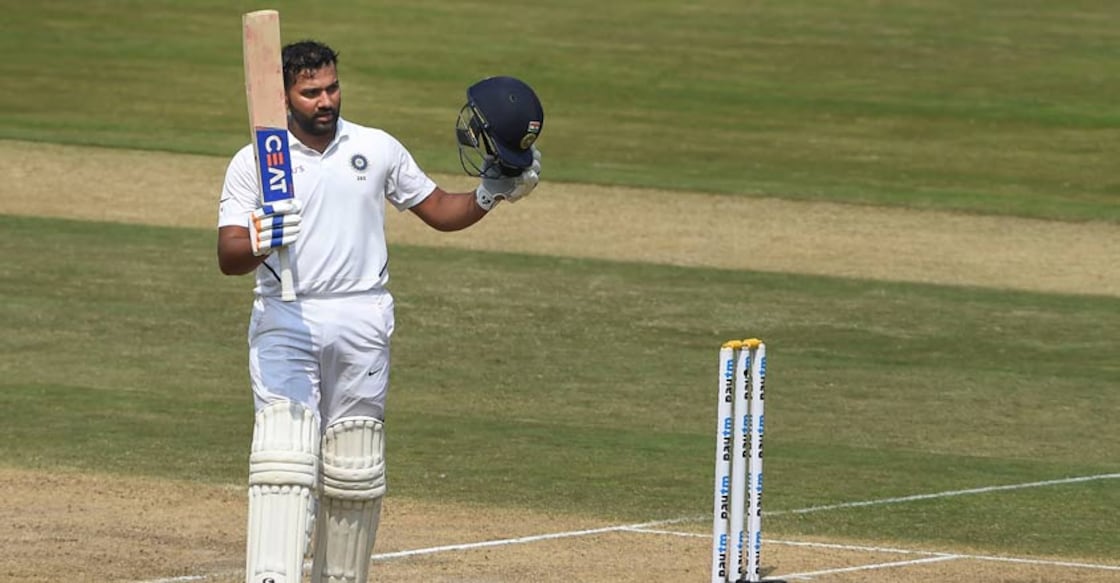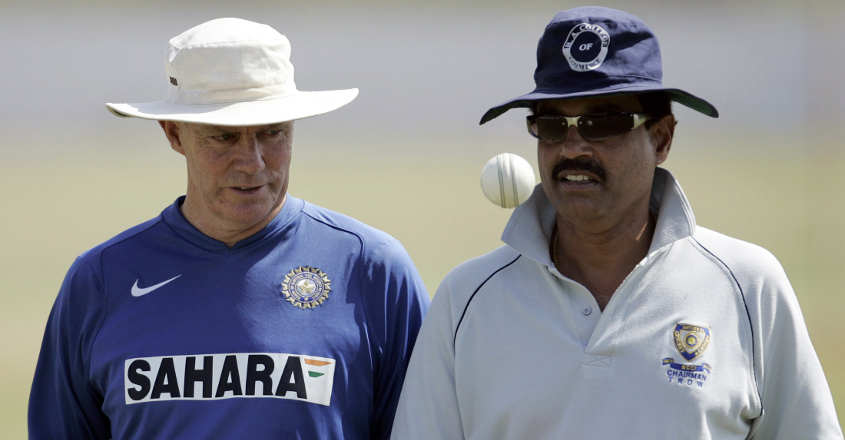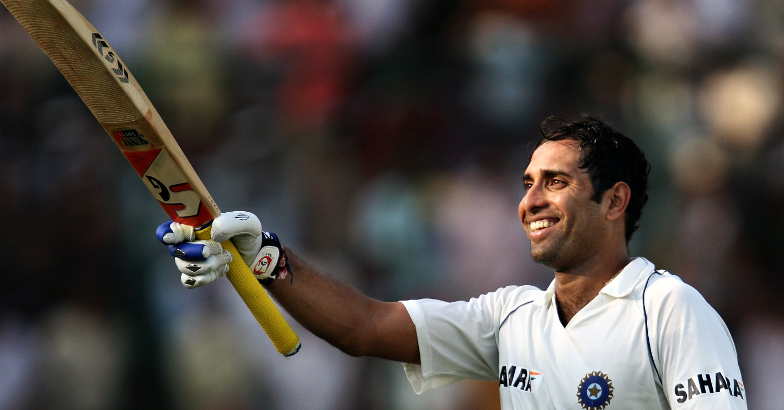Column | Can Rohit Sharma revive his Test career by switching to opening slot?

Mail This Article
In March 2002 I umpired a Duleep Trophy match between North and East zones at the Feroz Shah Kotla ground in Delhi. Vikram Rathour, presently the batting coach of the national side, was leading North Zone and he chose to bat after winning the toss. He came out to open the innings and after a couple of overs, he whispered to me, “Sir, I will score a double hundred on this wicket”. He batted in a dour and dogged manner and completed his double century on day 2 of the match, after which I told him, “Skipper, you met the target you kept for yourself”. He smiled and replied, “Sir, this is a patta wicket where ball would not rise above knee level and comes on to the bat; one can score tons of runs on such pitches. But it counts for nothing as real cricket is played on hard fast tracks where ball seams and swings and there our batsmen struggle as we are brought up on such easy-paced pitches”. He would know this very well as for all his big scoring in domestic cricket, Rathour could make only 131 runs in 10 completed innings in the six Test matches that he played for the country.
This conversation with Rathour came to my mind when Rohit Sharma was being praised for hitting a century in his first Test as an opening batsman. Rohit had made his debut in Test cricket as a middle-order batsman and scored heavily in matches played in India, while coming a cropper on wickets abroad. He moved to the top of the batting order in limited overs’ cricket, where he has been a huge success in both One Day Internationals (ODI’s) and T20 games. However, he could not retain his place in the eleven in Test matches on account of his repeated failures when playing in pitches outside the country. The filling up of the spots in the middle order by younger batsmen caused a rethink and prompted the suggestion that he open the batting in the longer duration version of the game as well. His first foray into Test cricket as a opening batsman turned out to be a success with stroke-filled centuries coming from his bat in both innings on the placid wicket at Visakhapatnam against South Africa.
It is too early to predict whether these hundreds would be the forerunner of a dream run for Rohit in his new position in the batting order in Tests. After all, he had scored heavily in Test matches played in India earlier too when batting in the middle order. His difficulties have come when confronted with hostile bowling on surfaces that allow the ball to bounce and seam, testing the technique and temperament of even the best of batsmen. It is not in doubt that Rohit is blessed with tons of talent and it is the prayer of fans all over the country that he converts this potential into performance in Test cricket as well. If he could achieve that while opening the batting for the side that would be a double bonus, as it would also, at one stroke, solve the problems that are faced at the top of the order by the national side.

This also brings to mind several instances in the past when batsmen who started their career in the middle order but were forced to shift to opening the innings. This has happened quite a few times in the past in India and the list of such players is very long. However, the end results have generally not been very satisfactory as, barring Virender Sehwag and Ravi Shastri, none of the others could meet with success after moving to the top of the order in Test matches.
Why do middle-order batsmen shift to open the innings, and that too at the highest level of the game when it is most difficult to change and adapt? In some cases, such a move is on account of pressures from the team management itself while players also occasionally volunteer to open the innings. In the latter case, it is more on account of the fact that the player concerned can't break into the middle order but wishes to remain in the playing eleven at all costs. Both Shastri and Sehwag were asked by the team management to open the batting and they adapted to the role very well. Despite his success in this position in both longer and shorter versions of the game, it was only during the last couple of years of his international career that Shastri took to opening the innings in Test matches on a regular basis.

Dilip Vengsarkar is the classic case of a middle-order batsman who was forced to open the batting but could not adjust to the demands of batting at the top of the order. Vengsarkar had shot into prominence with a blistering century against the Rest of India in an Irani Trophy match and was selected as a member of the national side that toured New Zealand and West Indies in 1975-76. He was asked to open the innings in New Zealand and failed miserably. When he got an opportunity to bat in the middle order in the last Test of the series against West Indies at Kingston, he gave a good account with the bat, despite the barrage of intimidatory bowling unleashed by Windies fast bowlers led by Michael Holding. He made one more appearance as an opener - against England in Chennai in 1977- before announcing that he was available for selection only as a middle-order batsman. This decision helped him to salvage his career and he soon blossomed into a world-class middle-order batsman.
Another middle-order batsman who was pitchforked into the opening slot much against his will was VVS Laxman. With Sachin Tendulkar, Rahul Dravid, Saurav Ganguly and Mohammad Azharuddin occupying key slots in the middle order, it was not possible for a new batsman, even one who was as talented as Laxman, to break in and claim a place. In his autobiography Laxman has described in great detail his travails while attempting to come to grips with the challenges involved in opening the innings and how it hampered his natural style. He made a superb century against Australia at Sydney in 2000 against an attack that included Glenn McGrath, Brett Lee, Damien Fleming and Shane Warne but decided soon afterwards that he would stop opening the innings as it was affecting his game. He was dropped from the side but came back as a middle-order batsman for the series against Australia in 2001 and the sheer magic that he created using the willow in the Test matches that followed is part of Indian cricket folklore.

Sanjay Manjrekar made his entry into international cricket as a middle-order batsman and won accolades for his superb batsmanship during tours to West Indies and Pakistan in 1989. When he failed to cement his place in the side despite numerous opportunities he took the decision to open the innings in 1996. He must have realised that his chances of winning a place in the middle order had diminished considerably with the successful arrival on the scene of Dravid and Ganguly. It was later revealed that Vengsarkar had advised Manjrekar against his move to open the batting but the latter had, by his own admission, made up his mind against going back to the grind of domestic cricket to attempt a comeback. Manjrekar got his opportunities to bat at the top of the order in Tests and ODIs but could not make much of a mark and was soon shown the door.
Others who shifted from middle order to opening slot included WV Raman, the stylish left-hand batsman who opted for this shift to regain his place in the national side, and Ashok Mankad, who was asked by his skipper MAK Pataudi to open the innings. Both of them achieved some success initially but could not sustain it. However, Mankad was luckier amongst the two as he could revert to his position in the middle order and make a comeback to the Test side, though with moderate success.

Amongst the successful ones, Sehwag stands out as he evolved into one of the most destructive opening batsmen in the history of cricket. He scored two triple tons batting in this position, besides numerous centuries and double hundreds. However, it must be conceded that Sehwag was indeed unique in that he had the amazing ability to sight the ball early, was completely fearless, possessed the guts to play his shots and held no respect for reputations. He kept his game simple, struck the ball cleanly with the bat in full swing and and owned a clear mind which did not bother about mundane matters like risks. These abilities and the lack of baggage made him a special package and contributed handsomely to his success as an opener. Shastri, on the other hand, was the exact opposite of Sehwag, in that he was dour, determined, placed a big price on his wicket and chose to graft and grind his way. He also used his considerable intellect and remarkable grit to survive difficult situations. In fact, the only aspect common to both of them was the raw courage they displayed while taking on fast bowlers without flinching.
Thus, Rohit Sharma is the latest entrant to the club of converted opening batsmen that has quite a few distinguished members. Rohit does not hesitate to play his strokes and though his technique is on a stronger footing than Sehwag, he does not possess Shastri's fortitude. Rohit is prodigiously talented but that alone would not guarantee success at this level, unless it is backed by positive attitude and fierce resolve, areas where he has been found wanting. One hopes that the move to the top of batting order provides the spark required for Rohit to dig up hitherto undetected reserves of tenacity and perseverance, which would assist to resurrect his career in Test cricket and find a place in the pantheon of legends of the game.


